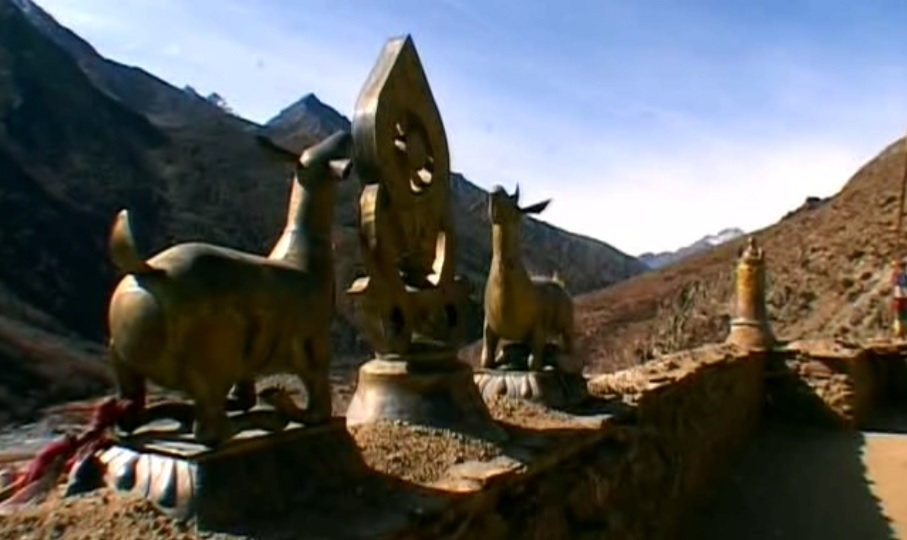In Search of Myths and Heroes episode 2 – Shangri-La: Documentary series in which historian Michael Wood goes in search of the world’s greatest myths. He goes on a trek through India, Nepal and Tibet in search of Shangri-La, the magical valley hidden behind the Himalayas popularised in the 1930s movie Lost Horizon.
He visits timeless monasteries and the world’s most sacred mountain before finally reaching the ruins of the lost city he believes is the real inspiration behind the myth. Documentary series in which historian Michael Wood goes in search of the world’s greatest myths.
In Search of Myths and Heroes episode 2 – Shangri-La
Shangri-La is a fictional place described in the 1933 novel Lost Horizon by British author James Hilton. Hilton describes Shangri-La as a mystical, harmonious valley, gently guided from a lamasery, enclosed in the western end of the Kunlun Mountains. Shangri-La has become synonymous with any earthly paradise, particularly a mythical Himalayan utopia – an enduringly happy land, isolated from the world. In the novel, the people who live at Shangri-La are almost immortal, living hundreds of years beyond the normal lifespan and only very slowly aging in appearance. The name also evokes the imagery of the exoticism of the Orient.
In the ancient Tibetan scriptures, the existence of seven such places are mentioned as Nghe-Beyul Khembalung. Khembalung is one of several beyuls (hidden lands similar to Shangri-La) believed to have been created by Padmasambhava in the 9th century as idyllic, sacred places of refuge for Buddhists during times of strife (Reinhard, 1978).
In China, the poet Tao Yuanming of the Jin Dynasty (265–420 CE) described a kind of Shangri-La in his work The Tale of the Peach Blossom Spring. The story goes that there was a fisherman from Wuling, who came across a beautiful peach grove, and he discovered happy and content people who lived completely cut off from the troubles in the outside world since the Qin Dynasty (221–207 BCE).
Some scholars believe that the Shangri-La story owes a literary debt to Shambhala, a mythical kingdom in Tibetan Buddhist tradition, which was sought by Eastern and Western explorers. Shambhala is a core concept in Tibetan Buddhism that describes a realm of harmony between man and nature that is also connected with the Kalachakra or “wheel of time”. The Shambhala ideal is described in detail in the Shambhala Sutra, a historical text written by the Sixth Panchen Lama which describes some of the Shambhala locations as being in Ngari, the western prefecture of Tibet.




